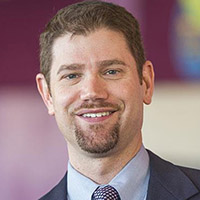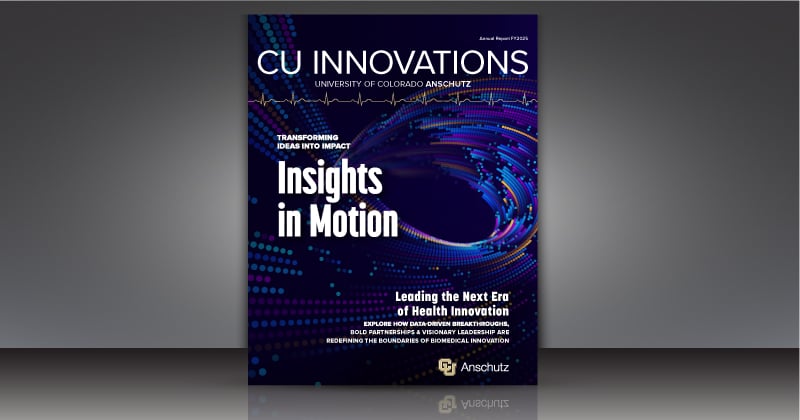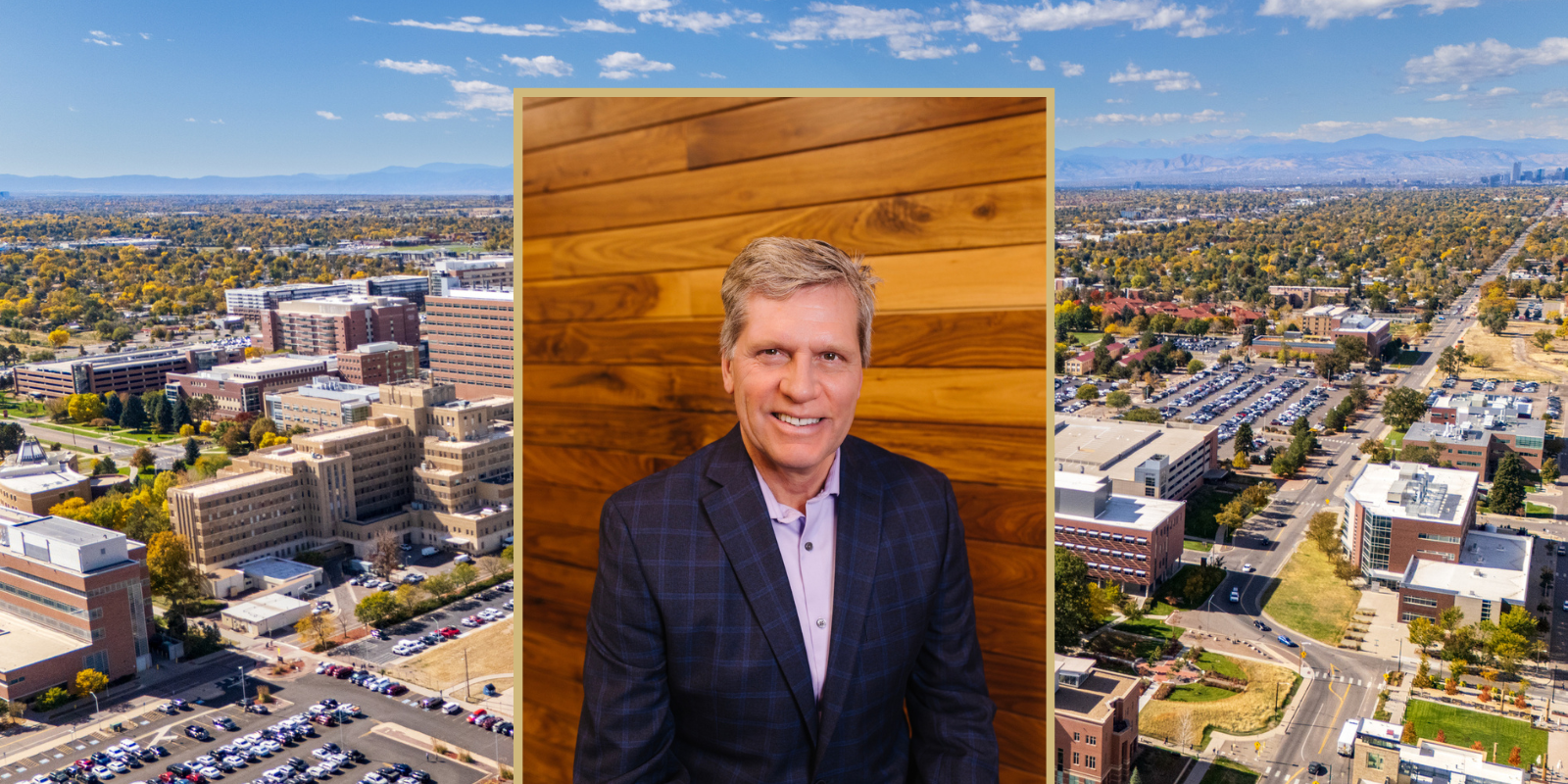When Joel Friedlander, DO, MA, bioethics, travels to Vienna this month, he will check another box on a journey that’s been a series of peaks, and a few valleys, on the way to a breakthrough medical device that hit the healthcare trifecta: it opens access, improves care and lowers costs.
At a medical conference, he will share the story of the slim-scope unsedated transnasal endoscopy, a system developed over six years ago by a team of physicians at Children’s Hospital Colorado (CHCO) who are also faculty at the University of Colorado School of Medicine (see sidebar). The group – Friedlander, a pediatric gastroenterologist; Jeremy Prager, MD, MBA, otolaryngologist; and pediatric pulmonologists Robin Deterding, MD, and Emily DeBoer, MD – developed a new kind of scope that dramatically improved treatments for young patients.
They are part of CHCO’s Aerodigestive Program, which brings multidisciplinary providers together to brainstorm better ways to diagnose and treat patients with breathing and digestive problems. The development of this device – ultra slim and biopsy capable – is moving closer to becoming the standard-of-care diagnostic tool for various gastrointestinal diseases in both children and adults.
Innovative think tank
In the Aerodigestive group, each discipline used a scope that served a different purpose. A gastroscope, for example, is a 9.6 mm-wide device that is long enough to reach the stomach and small intestine. It allows one to collect biopsy samples, but because of its size typically requires general anesthesia for the patients. ENT providers use a much shorter and more slender imaging tool that goes through the nose and reaches the base of the throat that does not require sedation to be performed. It allows point-of-care evaluation in the office rather than the operating room.
|
CU School of Medicine positions of the unsedated transnasal endoscopy team: Joel Friedlander, DO, MA-bioethics, associate professor, pediatrics-gastroenterology Jeremy Prager, MD, MBA, associate professor, otolaryngology Robin Deterding, MD, professor, pediatrics-pulmonary medicine Emily DeBoer, MD, associate professor, pediatrics-pulmonary medicine |
“Joel and I started talking about using the more narrow and flexible pulmonary scope to do a transnasal esophagoscopy on children, where you go through the nose and wind up in the esophagus, also similar to GI’s awake placement of a nasal feeding tubes,” Prager said, noting that the adult transnasal endoscope was too large for use on children and many adults. “Pulmonologists use a very slim, but shorter bronchoscope with a channel and we can biopsy through it.”
Using virtual reality (VR) as a distraction and dissociation tool for children, they used the reusable bronchoscope as a “bridge” to a smaller-than-a-pencil scope that is guided through the nose of an unsedated child and into the digestive tract – imaging and collecting biopsies along the way. A series of pilot studies at CHCO demonstrated that the unsedated procedure, typically performed on young patients with eosinophilic esophagitis (EoE) – scarring often caused by food allergies – could be done more safely and efficiently than a traditional, sedated upper endoscopy.
Creating a company
“As a spin-off, Joel, myself, Robin and Emily created a company to develop our own scope to do this better and bring the technology to more providers and more patients,” Prager said.
The group launched Triple Endoscopy Inc. in 2017, which evolved into EvoEndo and has Friedlander, who left CHCO to embark on his new role, as its chief medical officer. Friedlander said the traditional sedated upper endoscopy in pediatrics often charges patients well over $10,000 and requires patients to spend their day in clinic and then at home clearing the anesthesia.
An unsedated procedure using the sterile, single-use EvoEndo system, meanwhile, has the potential to significantly decrease charges for all patients needing diagnostic endoscopy, not just for patients with EoE. It does this by eliminating anesthesia and takes about an hour in the clinic (the endoscope itself only lasts about eight minutes with no further downtime for patients). The team’s single-use system also eliminates the need for endoscope repair/reprocessing, enables portability and increases clinical efficiency. This may also increase value for health systems.
“Having that unsedated opportunity allows us to look at delivering care faster and earlier and finding a diagnosis earlier. It can also lower the cost of care and improves safety,” Friedlander said. “I think opening access – putting the right patient in the right part of the hospital, and not tying up rooms that can be used for other procedures – is also really important. The whole mission was to improve the value of healthcare.”
While the EvoEndo system was born out of a pediatric setting, it also offers benefits for adult patients, Friedlander said. “When someone comes in with various gastrointestinal symptoms, or if they are at risk of a certain disease, it is now possible to do a point-of-care procedure to determine if they need urgent treatment. This is similar to how our ENT colleagues have provided care for decades,” he said, adding that it frees up clinical spaces for other important procedures. “So, it improves healthcare because now a wider range of patients actually have access.”
CU Innovations lends a hand
The physicians got help from CU Innovations, which connected them to engineers during the prototype stage. The project also received help from an investor with a child who has struggled with EoE, which requires a taxing regimen of treatments followed by multiple evaluations of their efficacy using sedated endoscopy.
Early on, the physicians incorporated virtual reality goggles that allow patients to be distracted by an immersive visual experience during the procedure. “Multiple studies have shown that VR actually helps through distraction and dissociation process, and recently the AMA (American Medical Association) released coding for its use to help patients undergoing procedures,” Friedlander said. Before the scope is inserted, patients also receive a small dose of a numbing agent in their noses.
“When I was practicing at Children’s, people would come from all over the country to watch the procedure,” Friedlander said. “Now my role at EvoEndo is to research how unsedated transnasal endoscopy can be used in different conditions and specialties. This could be considered for a variety of patients with different diseases or illnesses. Our team is also looking at other products that we can develop as a team. The third part of my job is clinical education – leading teams and helping teaching people how to use our devices.”
Friedlander noted that it’s a very difficult process to develop, launch and market a new medical device. “A lot of medical startup companies don’t make it this far into commercialization, and we are so fortunate to have a team that helped us get here. Hopefully we can help others when they need help as well,” he said.
Moving closer to standard of care
The project, which has produced multiple patents, received Food and Drug Administration approval for sale in the United States in February 2022. The clearance takes the EvoEndo unsedated endoscopy procedure utilizing virtual reality one step closer to being the standard of care for certain diagnostic procedures.
The system is now being used in over a dozen U.S. hospitals, both pediatric and adult, and “many more are in the pipeline,” Friedlander said. Patients, who regularly express relief about swapping the costly and time-intensive endoscopy for the unsedated procedure, are a major driver of the company’s growth.
Friedlander’s trip to Austria opens the door to the unsedated endoscopy procedure for children in Europe where it’s not widely available, but is picking up steam. He is helping teach a course at the ESPGHAN, European Society for Pediatric Gastroenterology Hepatology and Nutrition, meeting.
“It’s starting to move all over the world because people say, ‘Why can’t we have this for our patients?’” Friedlander said. “And it’s really cool because patients are asking for it, which then gets the doctors to do it.”
Prager said the device’s success demonstrates that medicine benefits when clinicians and other healthcare professionals are given the opportunity to collaborate and explore new ways of doing things. “I think the organizations that are facile about putting people together, letting them organically try to solve a problem, are going to be successful,” he said.
Friedlander said hospitals and universities are at their best when fostering out-of-the-box thinking. “I think the next stage of these innovation centers is not just teaching people how to dream, but even more importantly what to do with the dreams you come up with.”

200.jpg)



